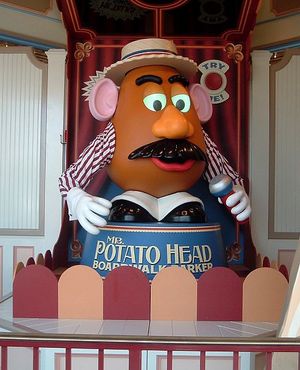It is fairly easy to make a DIY deer decoy. How elaborate you make your own deer decoy is a matter of personal choice. These are instructions for making a deer decoy that is simple to make and easy to carry around. The important part a DIY deer decoy is making it close to the shape and coloring of a deer. In these instructions for making a deer decoy, the moving tail will be the main attraction.
Items needed to make your own deer decoy:
Decoy material
(cardboard is the lightest material for a DIY deer decoy, but doesn’t wear as well. ¼ inch plywood can be used. Hardy board can be used as well, but is prone to break)
Cutting tool
(Scissors or utility knife for cardboard; saw for plywood or Hardy board)
Light brown paint for body
White paint for ears, throat and belly
Black paint for nose and eyes (this should be a gloss finish paint)
White sock
Photograph of deer, if needed
Nail or wood screw
How to make a deer decoy:
Step #1:
Draw an outline of a deer body. This should be approximately the size of a 1 to 2 year-old doe. The outline will be a broadside view, preferably with the head facing front. Draw the ears standing up, as if the deer was attention and listening to sounds around them. This is important when you make your own deer decoy.
Step #2:
Cut out the deer body pattern. Sanding is recommended, but it is not mandatory. This is an optional part of the instructions for making a deer decoy.
Step #3:
Paint the entire deer pattern using the light brown paint (note: all paint should be good quality exterior paint). Allow the light brown paint to dry.
Step #4:
Paint the belly, the throat and the ears using the white paint. Study the photograph (if needed) to get the right coloring when you make your own deer decoy.
Step #5:
Paint in the eyes and the nose with the black paint. Allow the black and the white paint to dry.
Step #6:
Attach the white sock to the end of the pattern with the nail or the wood screw.
Step #7:
Attach the fishing line to the end of the white sock. Cut enough of the fishing line to allow for running the string to a deer stand or shooting spot. This is the most crucial part of the instructions for making a deer decoy. The decoy’s tail will be “wiggled” to attract attention. Study a deer in person or on video if needed to simulate the proper tail movement, especially when a doe is excited or interested in a nearby buck.
This is how to make a deer decoy. Your DIY deer decoy should be placed in tall brush or grass when possible to mask the artificiality of the pattern.





